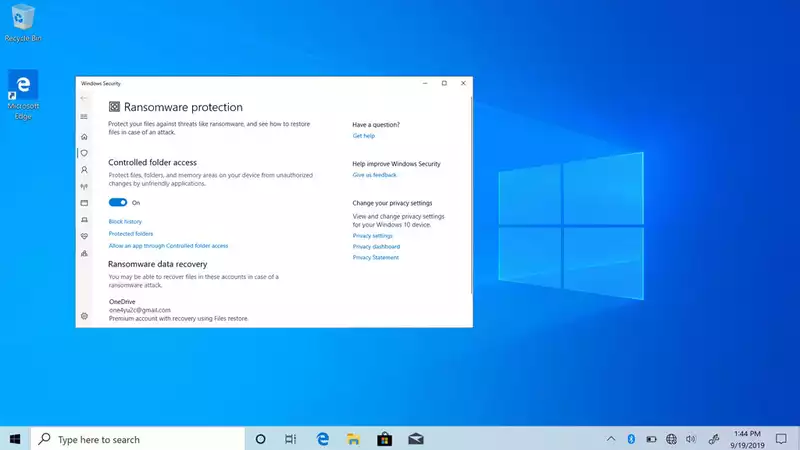Windows 10 has its own built-in antivirus solution called Windows Defender, which is enabled by default when you set up a new PC. At the very least, it provides basic protection against many malware threats in the wild. But did you know that there is an additional layer of options that can keep your photos, videos, work documents, and other files safe in the event of a ransomware infection?
More specifically, the feature is called "Folder Access Control."
Hats off to Forbes for pointing this out. To enable this feature, type "anti-ransomware" in the Windows search bar or go to Settings > Update & Security, click Open Windows Security, click Virus & Threat Protection, scroll down to "Manage Anti-Ransomware Click on "Ransomware".
The Controlled Folder Access toggle is set to "Off" by default (at least it was on my PC). Turning it on specifies specific folders that only trusted apps can access, and folders can be added in addition to the folder selected by default. There is also a section to give specific apps permission to access protected folders if needed. [Data outlined in SonicWall's 2021 Cyber Threat Report shows that ransomware is one of the largest and fastest growing malware threats, with a significant 62% year-over-year surge in attacks in 2020. According to the report, "the impact of the global pandemic and record-high cryptocurrency prices" have propelled ransomware to new heights, and it shows no signs of slowing down.
Last year, there were over 304 million ransomware attacks. Not all of them succeeded in extorting money from their victims, but the average ransomware payout increased to over $220,000 in the fourth quarter of last year, according to Coveware, a ransomware remediation service provider.
Of course, it is primarily businesses that pay such sums to attackers holding their data hostage. Small and medium-sized businesses in particular are disproportionately targeted, but ransomware facilitators also target individuals.
As for Windows 10's ransomware protection, it does work; a video posted a few weeks ago by YouTube's PC Security Channel shows the mechanism in action. When a "fairly lethal ransomware" strain was installed on a test system, the "folder access control" feature prevented designated folders from being tampered with, while unprotected folders were encrypted.
Thus, Windows 10 can add a layer of protection to certain folders. We can also tilt the odds in our favor by backing up important data regularly and, as always, following smart computing habits (e.g., not clicking on unsolicited email links).
We also tried this and it blocked the execution of the game - FIFA 21. This is because, by default, the My Documents folder is protected. However, it is easy to work around this. Clicking on the "Add Allowed Apps" button gives you the option to view recently blocked apps, allowing quick and easy access. Alternatively, you can remove My Documents from the list of protected folders.


Comments